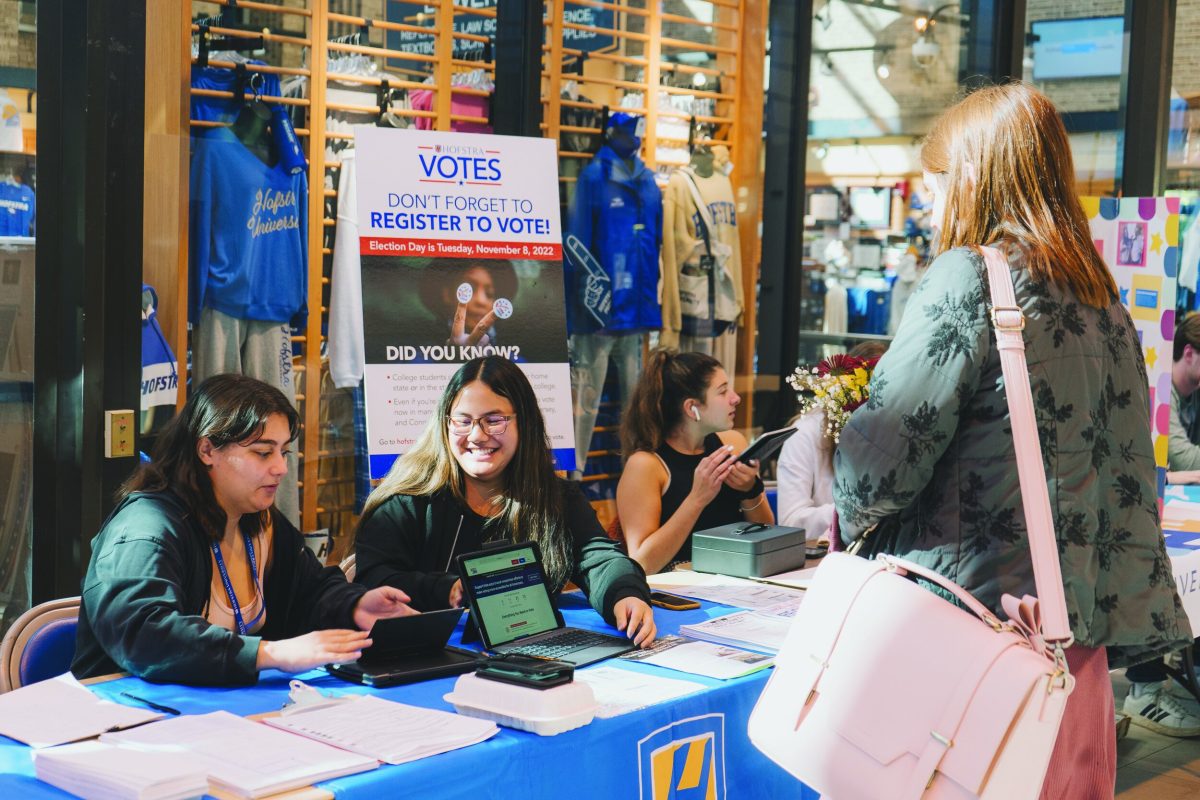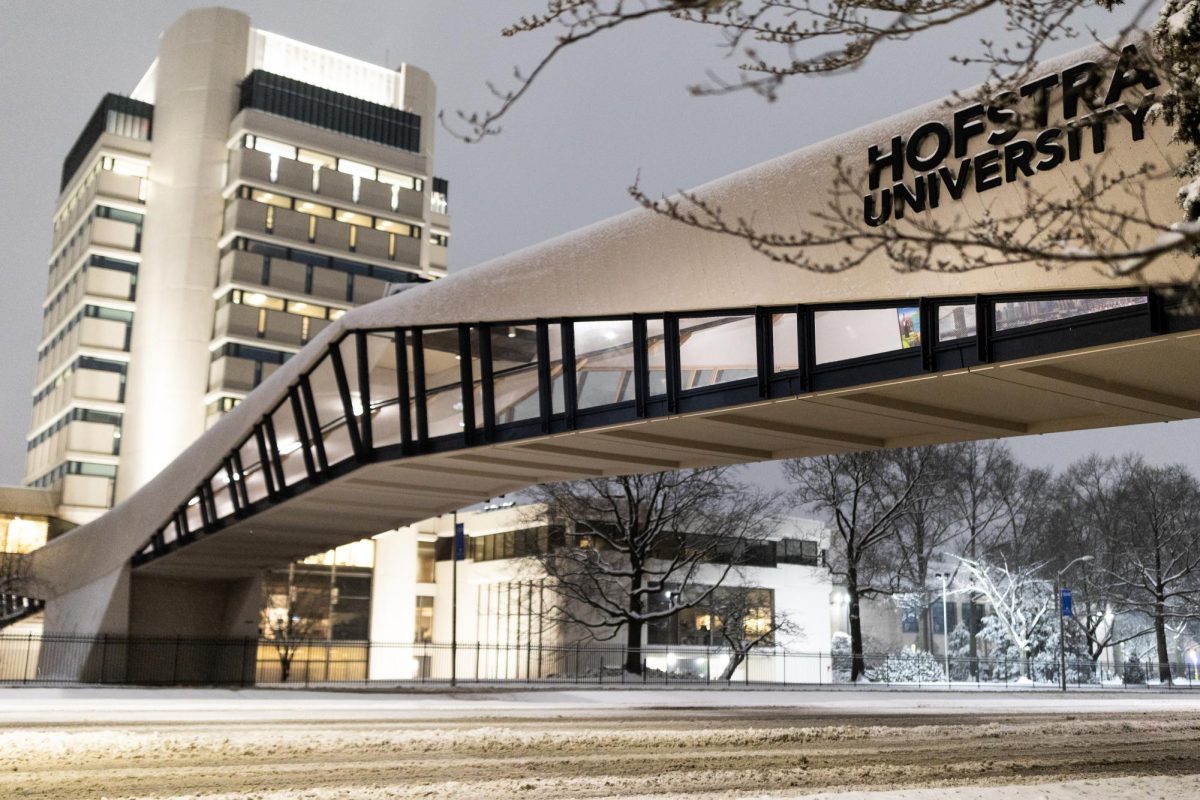Center for Civic Engagement fellows tabled in the Student Center atrium as a part of the Hofstra Votes campaign. // Trevor Parenteau / The Hofstra Chronicle.
Hofstra Votes is a campaign started by University Relations three years ago to help educate and empower students to vote in elections. Hofstra Votes has been active again this semester, preparing students for the midterm elections.
Rosanna Perotti, a political science professor, enlisted one of her classes to table in the Student Center during common hour to help students register to vote and provide them with necessary information for political participation.
“We’ve estimated that we’ve helped probably about 500 students,” Perotti said.
Some of the services they’ve provided are helping students request an absentee ballot, register to vote in their state, find information on polling places and provide education on the candidates they are voting for.
According to Sarah Stauffer, a volunteer for Hofstra Votes and a senior global studies and public policy and public service major, campaigns like these are necessary to help college students vote.
“The way in which voting is set up for college students,” Stauffer said, “it feels like it is designed to set college students up for failure.”
Logistically, it can be difficult for students to vote if they do not have a mode of transportation to get to a polling place or if they do not have enough information on how to request an absentee ballot in time.
However, New York state passed a law called the John Lewis Rights Act of New York.
Among many other voting rights initiatives, it allows for every college campus to have a polling place. According to Perotti, she believes that this addition would be extremely helpful to Hofstra students by providing them the opportunity to vote since the polling place will be a couple of buildings away and they will have time to stop by between their classes.
Although this law will be incredibly beneficial and Hofstra Votes is working to assist and educate students, Stauffer said that some students do not see the importance of voting.
“We were still trying to convince a fair amount of students to register and to vote,” Stauffer said. “I think a common misconception among our generation is that our vote wouldn’t matter. We are the largest [percentage of the] population, but we are the least active.”
According to Perotti, people aged 18 to 29 are the largest demographic of voters but are often the least participatory. However, young voters were essential to the results of the elections in 2020.
“Many analysts have said that the votes of young people helped to sway close elections across the country in 2020 both in presidential and in closely contested senate and house races,” Perotti said. “It matters when entire groups of people sit out in the electoral process.”
She also said that younger voters do not show a lack of interest in the topics or issues that are being voted on, despite the polling numbers.
“I know that college students have done a great deal of voting with their feet in protests over the past few years,” Perotti said. “College students have done a good job of making their preferences known in ways other than voting, but the only way you change the rules is by voting. You have to follow up protests by going to the ballot box.”
Kayla Stadeker, a senior global studies and geography major and volunteer for Hofstra Votes, said that she had seen a good number of students who were overwhelmed by the voting process. Still, she urges students to take the first steps to learn how to vote and for whom they’re voting in their state’s elections.
“As college students, we are the generation who is directly entering the workforce and are going to be dealing with these issues and these topics that we’re voting on right now,” Stadeker said. “So, it’s going to be up to us to essentially lead the country.”







